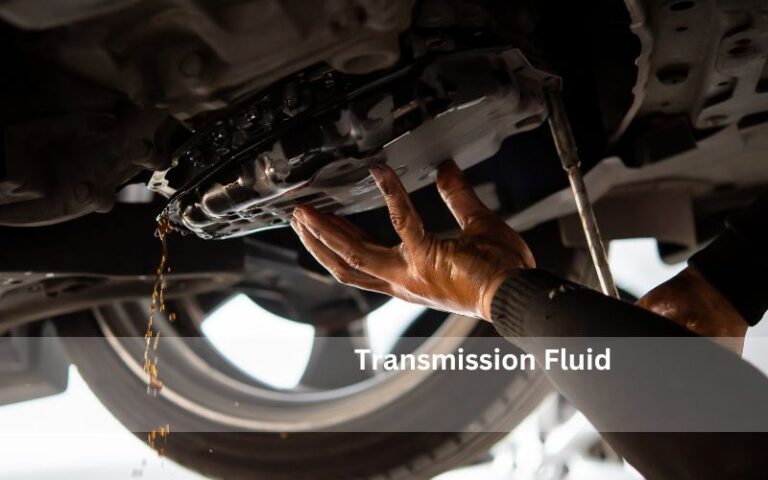How to Install Battery Disconnect
To install a battery disconnect, first turn off the vehicle’s engine and disconnect the negative battery terminal. Then, follow the manufacturer’s instructions to mount the disconnect switch securely in a convenient location near the battery.
When installing a battery disconnect, it is essential to ensure proper functionality and easy access for maintenance or emergencies. By following these simple steps, you can easily add a battery disconnect to your vehicle’s electrical system for added safety and convenience.
Remember to always consult the user manual or seek professional help if needed to complete the installation correctly and safely.
Choosing The Right Battery Disconnect
When it comes to choosing the right battery disconnect, consider the following factors to ensure you select the most suitable option for your needs:
Consider The Battery Type
Different battery types have unique requirements for disconnection. Lead-acid batteries, for instance, may benefit from a disconnect with a higher amperage rating due to their initial surge current. Lithium-ion batteries, on the other hand, require special consideration to avoid damaging their cells during disconnection.
Determine The Power Rating
Ensure the battery disconnect’s power rating matches or exceeds your battery’s maximum output. Exceeding the power rating can lead to inefficiency and potential dangers, while selecting a disconnect with a lower rating may result in equipment malfunction or failure during operation.
Evaluate The Wiring Requirements
Assess your wiring needs and verify whether the battery disconnect accommodates the appropriate gauge and type of wires. An inadequate fit may lead to electrical resistance, overheating, or compromised safety.
Preparing For Installation
Preparing for Installation:
Before installing a battery disconnect, it’s crucial to prepare properly. This means gathering the necessary tools, disconnecting the vehicle battery, and inspecting the battery disconnect. Follow these steps to ensure a successful installation process.
Gather The Necessary Tools:
- Wrench or socket set
- Safety goggles
- Owner’s manual for reference
- Battery disconnect switch kit
Disconnect The Vehicle Battery:
- Open the hood of your vehicle
- Locate the vehicle battery
- Use a wrench to loosen the nuts on the battery terminals
- Disconnect the negative (-) terminal first, followed by the positive (+) terminal
- Set the disconnected cables aside safely
Inspect The Battery Disconnect:
Before installation, examine the battery disconnect switch carefully to ensure it’s in good condition and all components are intact. Look for any signs of damage or wear that may affect its functionality.
Installing The Battery Disconnect
Identify The Suitable Location
Choose a secure spot for the battery disconnect within reach of the driver.
- Ensure it’s away from extreme heat sources or moving parts.
- Avoid locations prone to water exposure to prolong its lifespan.
Mount The Battery Disconnect
Attach the disconnect securely, ensuring proper alignment for ease of use.
- Check the manufacturer’s guidelines for specific mounting instructions.
- Use sturdy screws to fasten the disconnect tightly in place.
Connect The Wiring
Connect the wiring carefully to ensure proper functionality of the disconnect.
- Follow the color-coding or wiring diagram provided with the disconnect.
- Regularly check the connections for any signs of wear and tear.

Credit: www.amazon.com
Testing The Battery Disconnect
To install a battery disconnect, first, test the connection by following these steps: 1) Disconnect the negative terminal of the battery. 2) Measure the voltage across the terminals using a multimeter. 3) If the voltage reading is zero, the battery disconnect is working properly.
4) Reconnect the terminal and ensure a secure connection.
Testing the Battery Disconnect Reconnecting the Vehicle Battery To reconnect the vehicle battery after installing a battery disconnect, follow these simple steps: 1. Place the positive and negative cables back onto the corresponding posts of the battery. 2. Tighten the bolts on the battery terminals securely. 3. Ensure that the connection is snug to avoid any loose wiring. Check for Proper Functioning After reconnecting the vehicle battery, it is crucial to check for the proper functioning of the battery disconnect. Follow these steps to ensure everything is working as it should: 1. Turn the battery disconnect switch to the “on” position. 2. Check that the vehicle’s electrical systems, such as lights, radio, and dashboard, are functioning properly. 3. Test all components that rely on the battery to ensure they are operating correctly. Ensure Safety Measures It is essential to ensure safety measures before testing the battery disconnect. Follow these guidelines to ensure a safe and effective installation: 1. Wear protective gloves and eyewear to prevent any accidents during the testing process. 2. Keep all tools and equipment away from the battery and its terminals to avoid inadvertent electrical contact. 3. Double-check the connections and ensure that all wires are secured tightly to prevent any electrical mishaps. By following these steps, you can effectively test the battery disconnect after installation and ensure that everything is functioning as it should. Always prioritize safety and proper procedures when working with electrical components in your vehicle.Maintenance And Troubleshooting
To install a battery disconnect, begin by locating the battery in the vehicle. Then, ensure the car is turned off and start by detaching the negative battery terminal. After that, connect the battery disconnect switch and secure it in place before reattaching the negative terminal.
Double-check the installation before testing the switch to ensure everything works properly.
Keep The Battery Disconnect Clean
Maintaining a clean battery disconnect is essential for its proper functioning and longevity. Dust, dirt, and corrosion can accumulate on the terminals over time, leading to poor performance. To prevent this, regularly inspect the connections and clean them as needed. Start by disconnecting the battery from the disconnect switch. Using a mixture of baking soda and water, gently scrub the terminals with a wire brush. Rinse off the residue with clean water, making sure it does not enter the battery. Finally, dry the terminals thoroughly before reattaching the battery.
Monitor Battery Disconnect Performance
Regularly monitoring the performance of your battery disconnect is crucial to identify any potential issues before they escalate. Keep an eye on how smoothly the disconnect engages and disengages, ensuring there are no delays or difficulties in the process. Additionally, observe if there are any unusual sounds or vibrations during operation. If you notice any irregularities, it is recommended to consult a professional or refer to the manufacturer’s guidelines for further troubleshooting steps.
Troubleshoot Common Issues
While battery disconnects are designed to be reliable, there can be occasional issues that may require troubleshooting. Some common problems you may encounter include:
| Issue | Possible Solution |
|---|---|
| The battery disconnect does not engage | Check the battery voltage and ensure it is within the recommended range. If the voltage is low, recharge or replace the battery. |
| The battery disconnect engages but does not disengage | Inspect the wiring connections and ensure they are secure and not corroded. If necessary, clean or replace the connectors. |
| The battery disconnect gets stuck in the middle position | Check if there is any debris or obstruction around the switch mechanism. Clean the area and ensure smooth movement of the switch. |
If the above troubleshooting steps do not resolve the issue, it is advisable to seek professional assistance to avoid any further damage to your battery disconnect system.

Credit: www.youtube.com

Credit: www.motortrend.com
Frequently Asked Questions For How To Install Battery Disconnect
Do You Put Battery Disconnect On Positive Or Negative?
The battery disconnect should be placed on the negative terminal, as it disrupts the flow of current efficiently.
How Do You Hook Up A Battery Disconnect?
To hook up a battery disconnect, first, disconnect the negative battery terminal. Connect the battery disconnect switch in-line with the positive cable. Reconnect the negative terminal and test the switch to ensure it works.
How Do You Install A Disconnect Switch?
To install a disconnect switch, first turn off power. Connect neutral and ground wires, then the hot wires. Attach the switch to the box and cover it. Ensure all connections are secure and test the switch. If unsure about installation, consult a professional electrician for safety.
Why Install A Battery Disconnect Switch?
Installing a battery disconnect switch is important to prevent battery drain and preserve battery life. It allows you to easily disconnect the battery when the vehicle is not in use, preventing unnecessary power drain from electrical systems. This ensures you won’t be left with a dead battery and reduces the risk of electrical malfunctions.
How Do I Install A Battery Disconnect Switch?
To install a battery disconnect switch, first, locate the negative terminal on your battery. Then, disconnect the negative cable and attach the switch between the battery and cable. Finally, connect the negative cable to the switch and tighten the connections securely.
Why Should I Install A Battery Disconnect Switch?
Installing a battery disconnect switch can help prevent battery drain, protect against theft, and provide an added safety measure by disconnecting power when your vehicle is not in use.
What Are The Benefits Of Using A Battery Disconnect Switch?
Using a battery disconnect switch offers benefits such as extending battery life, preventing electrical fires, reducing the risk of electrical shorts, and making it easier to store your vehicle for long periods.
Conclusion
Installing a battery disconnect is a straightforward process that can effectively protect your vehicle’s electrical system. By following the steps outlined in this guide, you can ensure the safety of your vehicle when it’s not in use and prolong the lifespan of your battery.
Take the necessary precautions and enjoy the peace of mind that comes with a properly installed battery disconnect.


